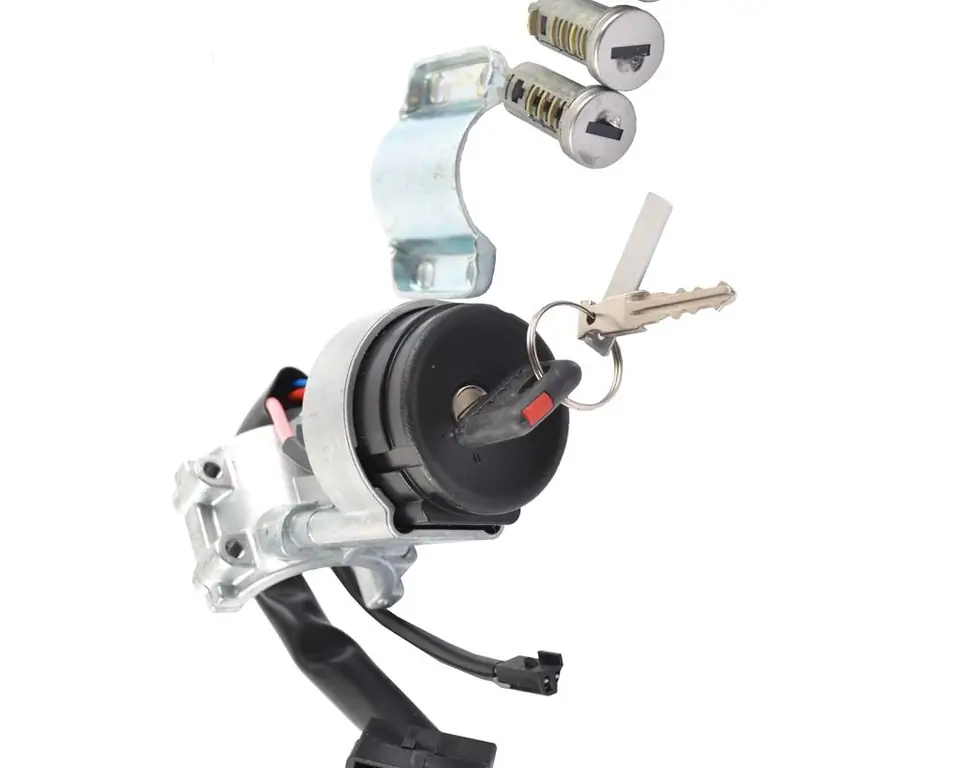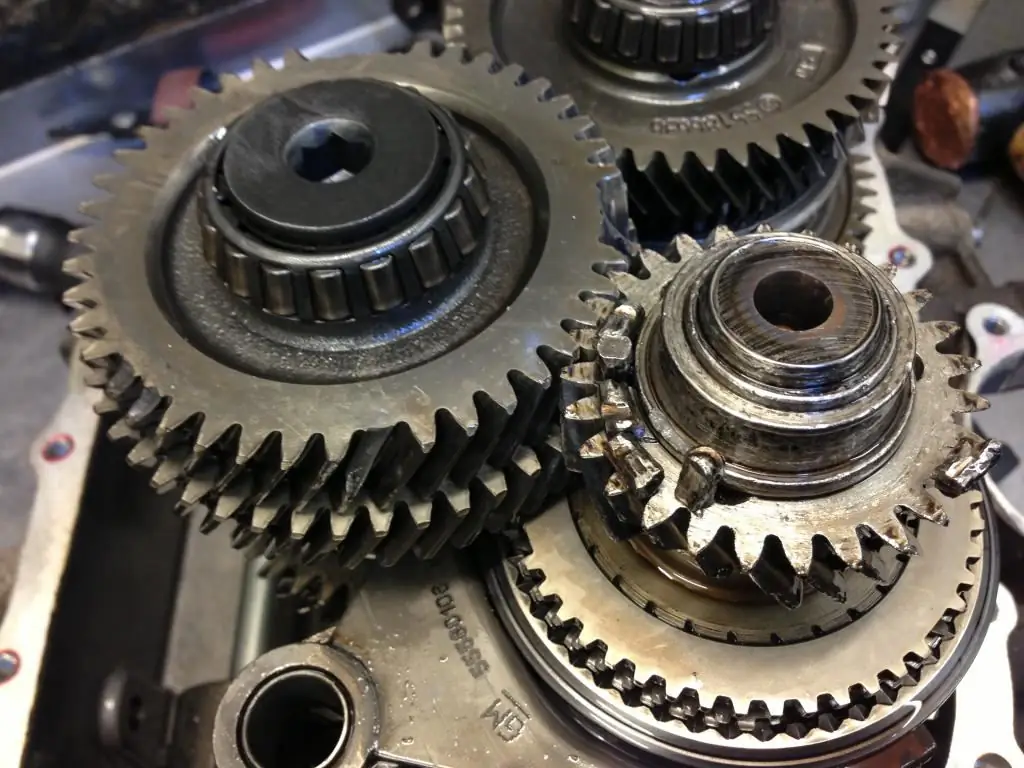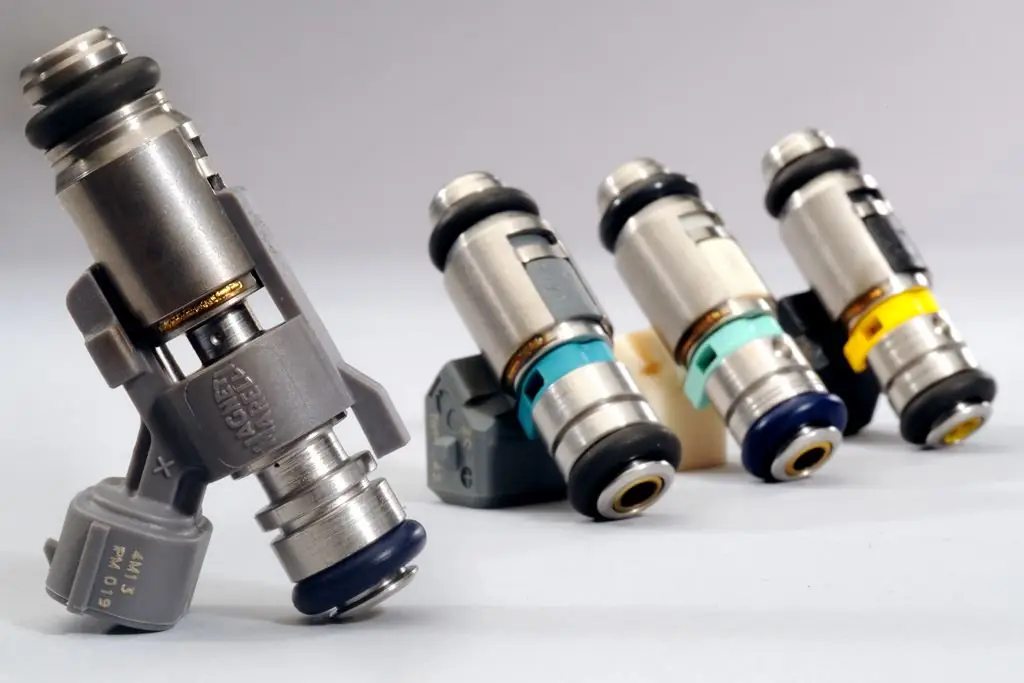2025 Author: Erin Ralphs | [email protected]. Last modified: 2025-01-22 21:14:11
As you know, the car engine uses a belt or chain drive gas distribution mechanism. The last type appeared a little earlier and is considered the most reliable. But recently the chain has become irrelevant for foreign manufacturers. But so far, domestic GAZelles and Niva (including the Chevrolet Niva) are equipped with just this type of drive. In today's article, we will look at the timing chain tensioner device, its principle of operation and replacement procedure.
Characteristics of the movement
This element performs the function of adjusting the chain tension in the timing drive. It is installed on all cars with such a drive. The hydraulic chain tensioner compensates for low tension. Over time, the part wears out. The chain, when the motor is running, constantly rotates and tends to stretch. It comes to the fact that the part jumps one or more teeth. As a result, incorrect gas distribution occurs. As a result - late or early closing of the intake and exhaust valves. Chain stretch is completely normal. During its service life, it can be extended by one to two centimeters. The chain tensioner smooths this out.stretching.
Device
This knot consists of several parts:
- Valve bodies.
- Snap ring.
- Plunger.
- Springs.
- Retaining ring.

Also, the hydraulic chain tensioner (Chevrolet Niva is no exception) has an oil supply hole.
How does it work?
The principle of the element is based on the work of the spring. When oil from the line enters through the valve body, the plunger presses on the plastic tension shoe. On some engines, a lever with an asterisk is used. Thus, inextricable contact of the surface of the working element is ensured. When the engine speed changes, the element plunger moves back. The spring is compressed.

Vibration damping occurs due to the flow of lubricant through the plunger and housing. Oil pressure is controlled by a hydraulic tensioner ball valve. When the chain is pulled out, the plunger extends from the housing. The retaining ring moves along the grooves, providing the proper tension. The assembly also compensates for thermal elongations that form as the engine warms up.
How to check the hydraulic chain tensioner?
It is necessary to control the appearance of new knocks in the engine compartment. If blows are found in the place of the cylinder head cover, this indicates a malfunction of the tensioner. These sounds are clearly audible when the accelerator pedal is abruptly released.

Whatthe reasons that the hydraulic chain tensioner of the 406th motor has become unusable? This may be a jammed plunger and breakdowns in the ball valve, which causes a mismatch in oil pressure. The plastic shoe itself (or the sprocket, if any) and the damper will also wear out.
Where is he?
This element is located in the engine compartment on the left side. You need to find the cooling pipes in front of the cylinder head - it is under them that the chain tensioner is located.
How to change?
If the above symptoms are observed, an urgent replacement of the hydraulic chain tensioner is necessary. To do this, we need a new element, as well as a set of heads. Using a 10 key, unscrew the fitting of the cylinder head cooling tube and take it up.

Next we find two fixing nuts of the tensioner itself. We unscrew them with the same key. We take the protruding part of the mechanism with our hands and remove it from the seat. It is worth noting that the chain tensioner has its own gasket, which also needs to be replaced. Before installing a new element, carefully coat the seats with silicone sealant. Install the gasket and tighten the bolts. By the way, before installation it is necessary to remove the transport stopper. This element is needed to prevent the tensioner from discharging (so that the plunger does not come out of the housing) during its transportation. To “charge” the element and bring it into working condition, after assembly, you need to press the part with a minus screwdriver with great effort. As a result, the body of the hydraulicthe tensioner under the action of the spring will move into the cover until it stops.

The plunger itself will produce the proper chain tension through the sprocket or shoe (depending on the design features of the engine). Before "charging" you need to carefully tighten all the bolts. Otherwise, it will lead to premature wedging of the element. Don't forget to reinstall the fitting. After installation, we start the engine and check it for extraneous sounds.
What to do if the replacement did not help?
It happens that knocks do not disappear even after replacing the tensioner. In this case, it is necessary to check the length of the chain itself. After 150 thousand kilometers, it can stretch so much that even a new tensioner cannot compensate for this. Therefore, when this mileage is reached, the chain also changes at the same time.
Can the old one be repaired?
An old hydraulic chain tensioner can be repaired 60 percent of the time. But first you need to make sure it's wrong. To do this, press the finger on the spherical end of the element. If it does not press, then the tensioner is stuck.

This is due to the misalignment of the locking ring. At the ends of the cut, it has small burrs. It is they who interfere with the operation of the element. The disassembled tensioner must be thoroughly washed in kerosene and the locking ring replaced. Its outer diameter is 16.6 by 3 millimeters. The ring can be made from spring wire. It happens that the ball valve fails - itpasses excess oil. To check its tightness, it is necessary to remove the plunger and spring from the housing. Insert the last end (spherical) part into the hole in the housing. Press your finger on the opposite end of the element. If there are large traces of oil leakage, the part must be replaced. From the factory, small discharges are allowed through two risks on the end part of the tensioner housing. They serve to remove air from the inside of the mechanism. You can try to flush the element, thereby restoring it. But the result is not always effective. To do this, it is necessary to wash the ball valve in gasoline or kerosene by pressing it with a thin wire through the oil hole. If the flush fails and the element is still leaking oil, it should be replaced.
Manual chain tightening
To eliminate the characteristic knock of the chain drive in the area of the valve cover, without changing the element itself, you can manually tighten the part. Consider how this procedure is performed on the example of a VAZ-2106 car. This uses a sprocket in the tensioner.

So, first you need to remove the air filter with the housing and casing. Next, unscrew the tensioner (not completely) and make 2-3 turns of the crankshaft. This can be done with a regular key by setting it to the third position. After several rotations of the crankshaft, the chain drive is engaged. Next, the level of its tension is checked by pressing a finger on the links. It should not bend two or more centimeters. When the chain is properly tensioned, the hydraulictensioner and the attachment is assembled in the reverse order. This procedure must be repeated every time there are knocks from the engine compartment.
Price
The cost of this item is from 500 to 900 rubles. In the absence of time for repairs, you can limit yourself to buying a new tensioner assembly.
Conclusion
So, we found out the device and principle of operation of the hydraulic chain tensioner. Remember that driving with knocks under the hood is fraught with engine damage. If the chain is stretched, it starts to vibrate. The gas distribution phases will be violated. Follow the change schedule and listen to your engine.
Recommended:
What is a timing chain? Which is better: timing chain or belt?

Now there is a lot of controversy about which timing drive is better - a timing belt or a timing chain. VAZ used to be equipped with the latest type of drive. However, with the release of new models, the manufacturer switched to a belt. Now many companies are moving to use such a transfer. Even modern units with a V8 cylinder layout are equipped with a belt drive. But many motorists are not happy with this decision. Why is the timing chain a thing of the past?
The principle of operation of the variator. Variator: device and principle of operation

The beginning of the creation of variable programs was laid in the last century. Even then, a Dutch engineer mounted it on a vehicle. After such mechanisms were used on industrial machines
"Lada-Kalina": ignition switch. Device, principle of operation, installation rules, ignition system, advantages, disadvantages and features of operation

Detailed story about the ignition switch Lada Kalina. General information and some technical characteristics are given. The device of the lock and the most frequent malfunctions are considered. The procedure for replacing with your own hands is described
Planetary gearbox: device, principle of operation, operation and repair

Planetary gears are among the most complex gear boxes. With a small size, the design is characterized by high functionality, which explains its widespread use in technological machines, bicycles and caterpillar vehicles. To date, the planetary gearbox has several design versions, but the basic principles of operation of its modifications remain the same
Carburetor and injector: difference, similarities, advantages and disadvantages of carburetor and injection engines, principle of operation and expert reviews

For more than a hundred years, the car has firmly established itself in our lives. During this time, managed to become a familiar, everyday means of transportation. Let's see what the difference is between a carburetor and an injector, what advantages and disadvantages they have

